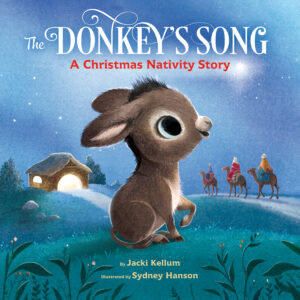
in my debut book The Donkey’s Song, I wrote very few words about the setting. That book has 150 words, and I did not feel that the lyrical, magical tone of the book could bear a lot of “spelling things out.” But as I wrote the book, I was fully aware of where that story was taking place. Fortunately, the fabulous illustrator Sydney Hanson “got it,” and she “wrote” the setting with her art. Again and again, a picture book is created by both the author and the illustrator
I did drop a few hints about the setting in the text, however:
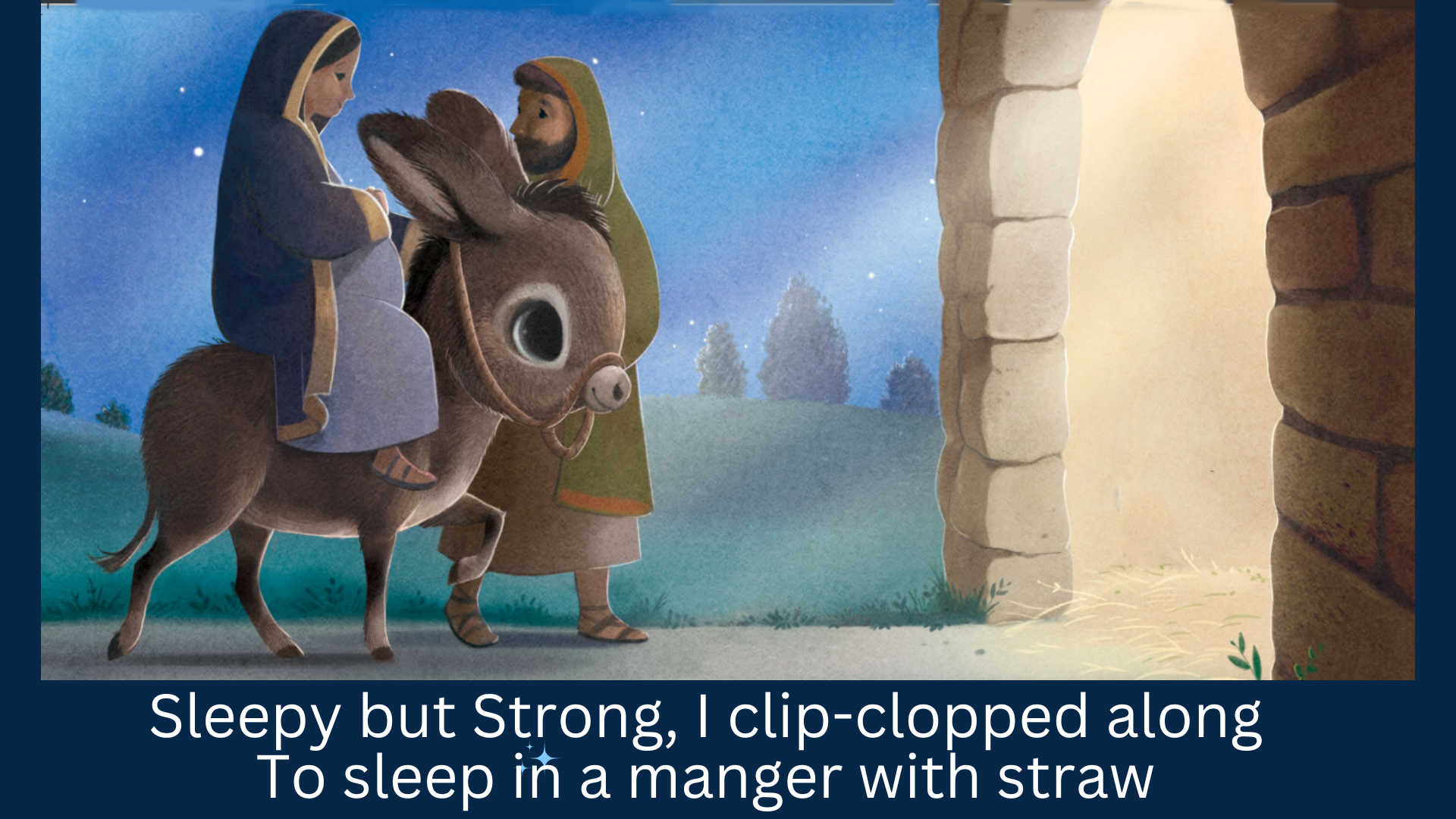
Setting: En Route to a Stable with Straw

Setting: The Stable is a cramped space.
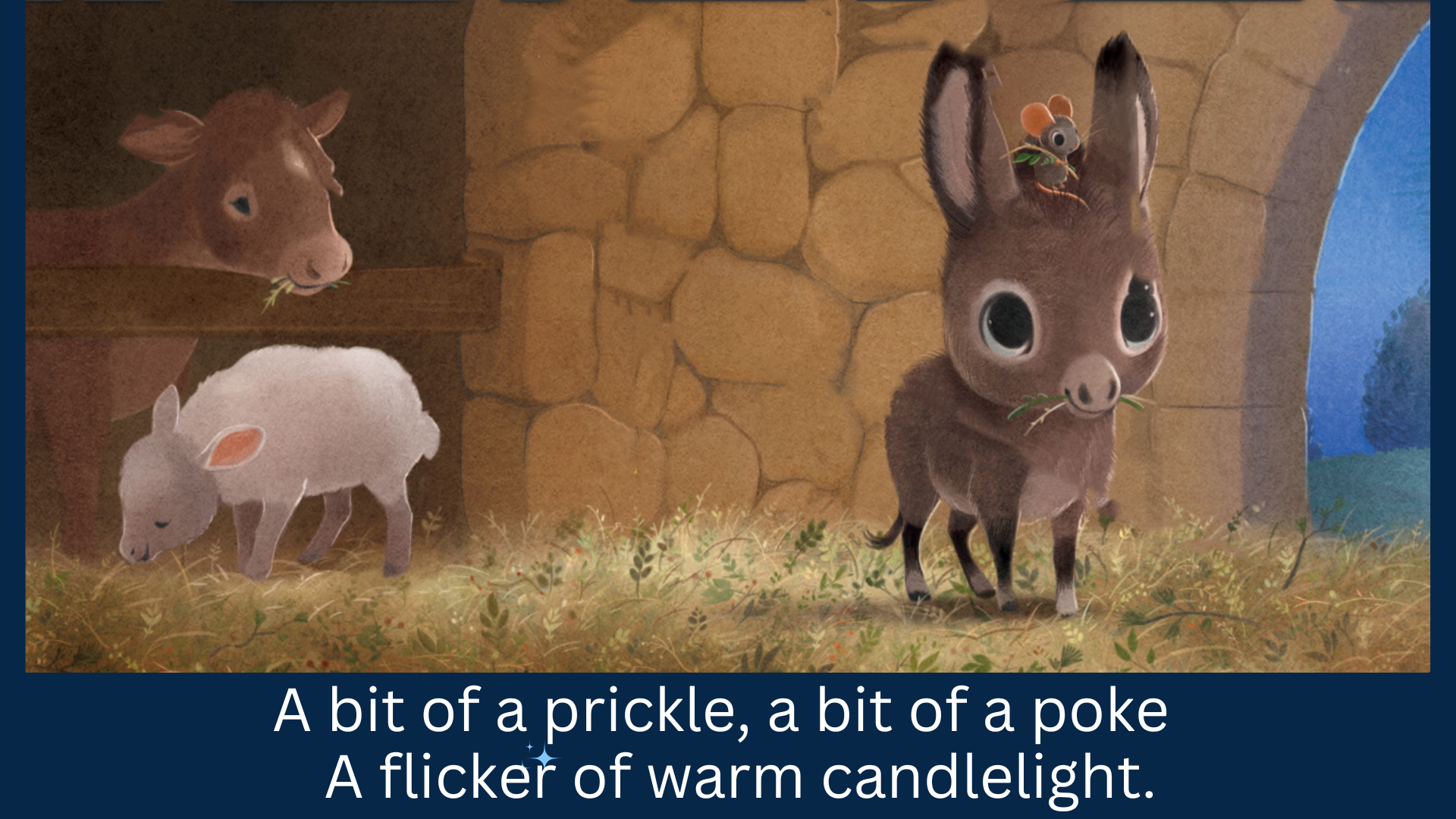
Setting; I told more about the Stable with Straw. The straw is prickly and scratchy.
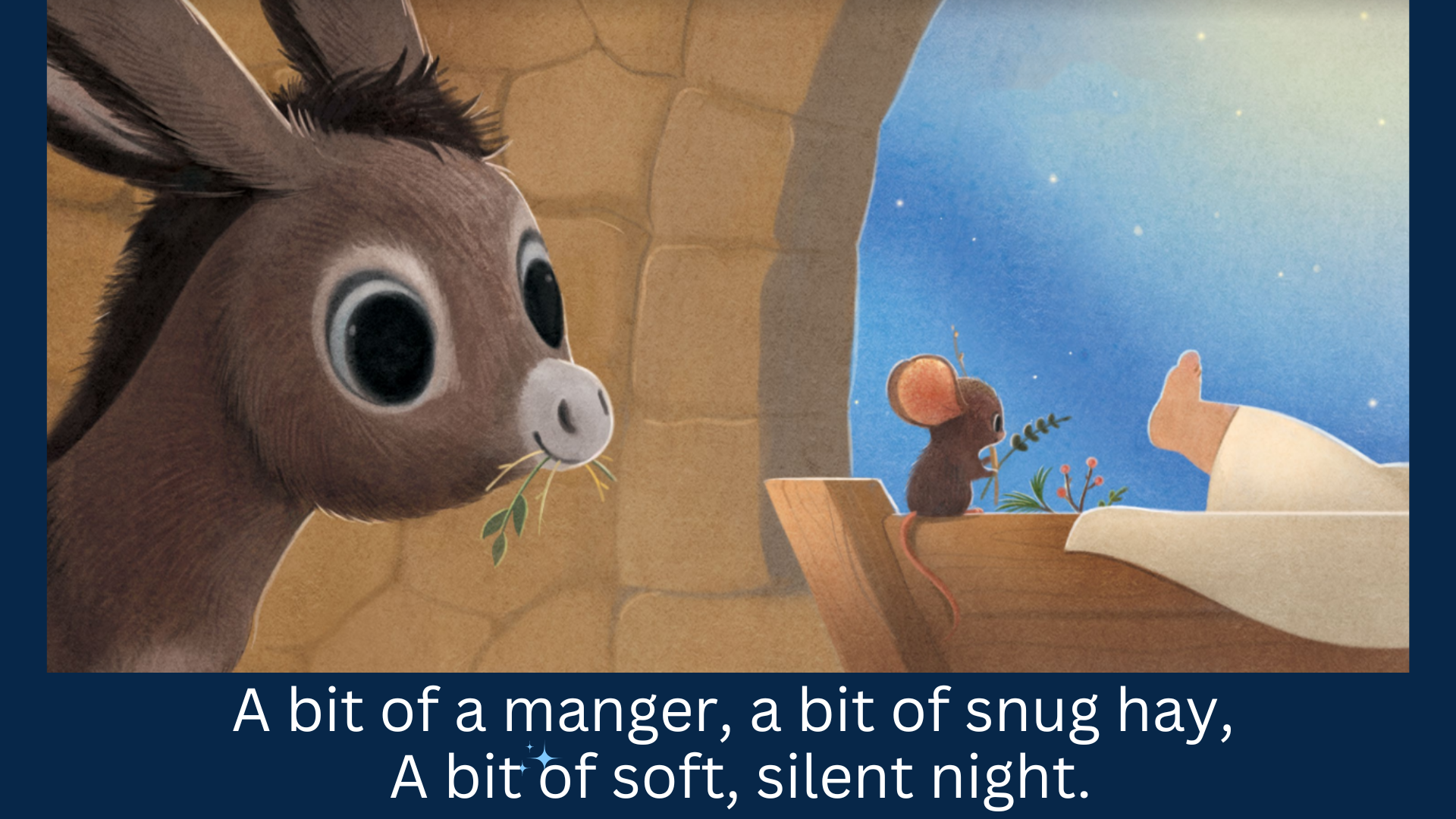
In the above passage, I have told you 3 more things about the setting.
- There was a manger, which is normally used to feed animals
- The manger is filled with soft hay
- It is a special night: soft and silent
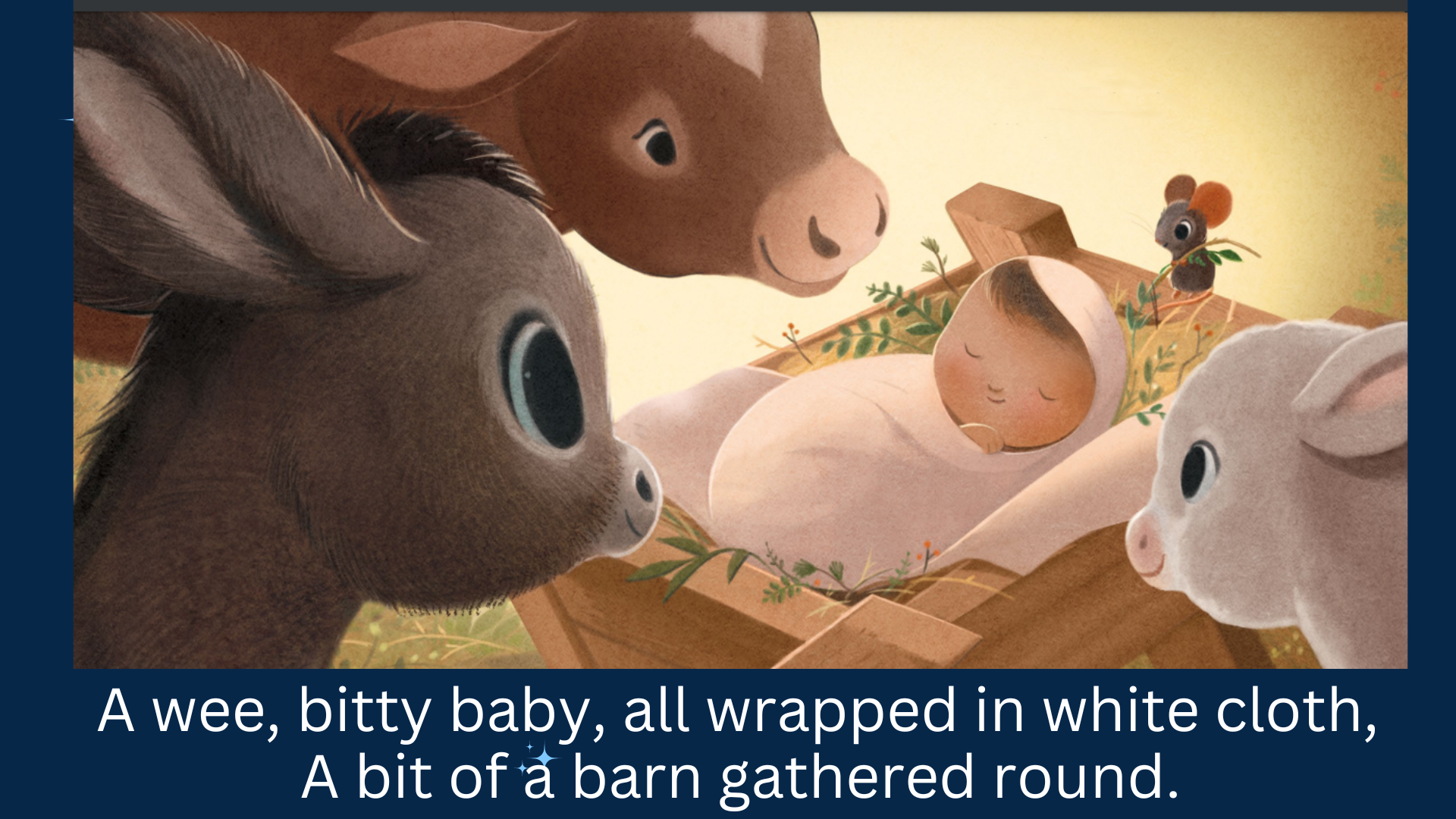
Setting: Barn with Animals.
Now, we are sure where that manger with hay is. It is in a barn, where animals slept at night
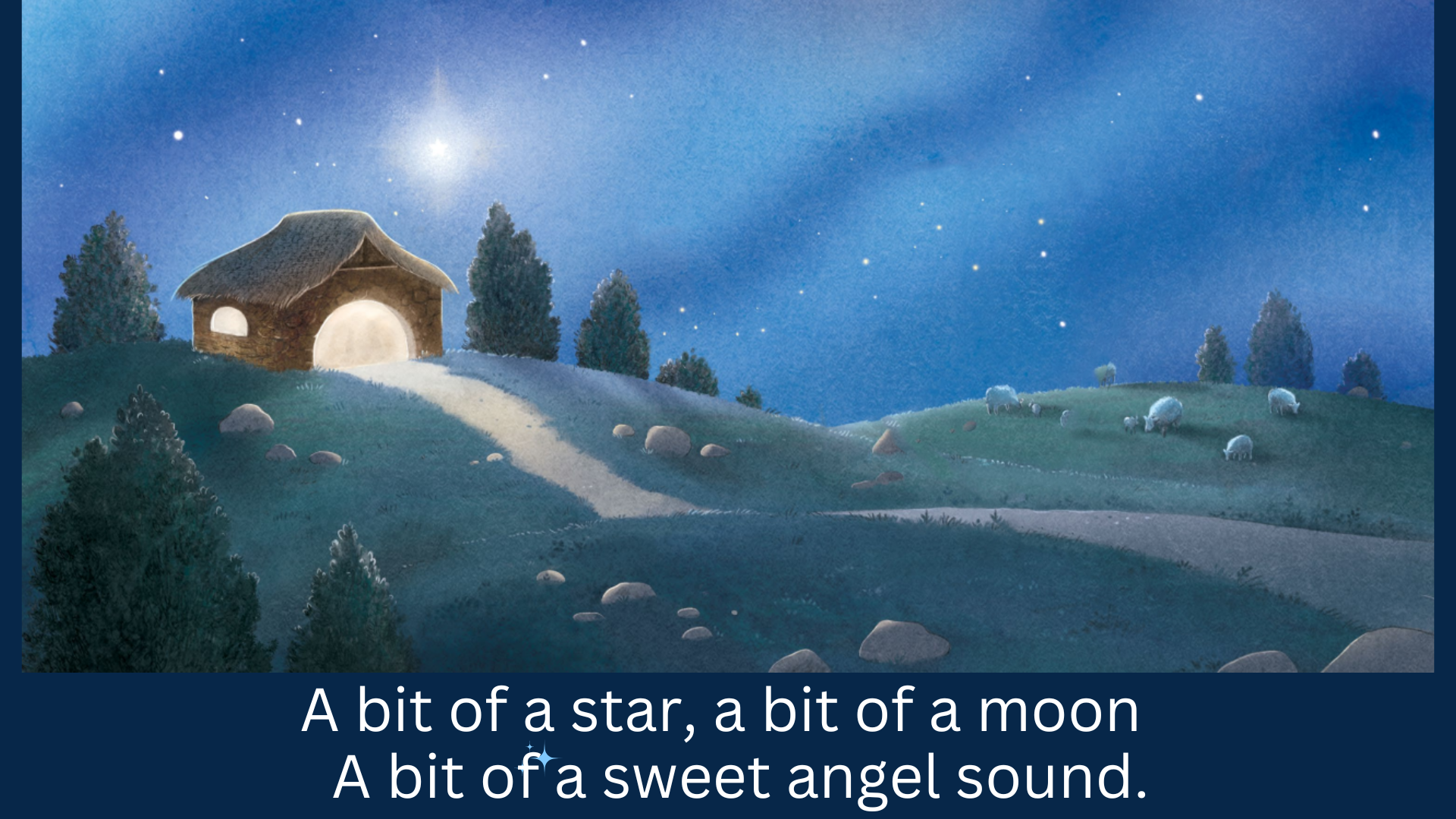
Setting: “Oh, Holy Night”– The setting has shifted a bit to the outdoors. Sydney Hanson brilliantly suggested that those hills were filled with shepherds and sheep.
On the next page, I say the words:
“Shepherds on hills far away.” – Setting
I explain in several posts that since I was a child, I have been able to recite the nativity story, as it is recorded in the Bible. When I began writing The Donkey’s Song, I didn’t need to read the story in the Bible again. I didn’t need to research the setting for my debut picture book. The words tumbled out of my mouth, and they tumbled out in rhyme. That is not usually the case. Normally, I do a great deal of research before I begin writing a picture book.
Yesterday, I finished another picture book manuscript that is partly connected to another Bible story, and I have diligently researched the details of that story for the past 2 months. The research paid off. Again, as I wrote this new manuscript, the words tumbled out.
Tip Number 1: Before you begin writing your story, be sure that you are clear about the setting.
Tip Number 2: Even if you are writing your story in short, quick rhyme, describe your setting in long, descriptive paragraphs before you attempt to weave the facts into a tapestry that takes on a life of its own.
If you are like me, you won’t write much about the setting. You will leave that job to the illustrator. But before you can effectively communicate a sense of the setting, you need to fill your brain with as much info as possible.
Let’s look at how a few picture book authors have written words about the settings of their stories:
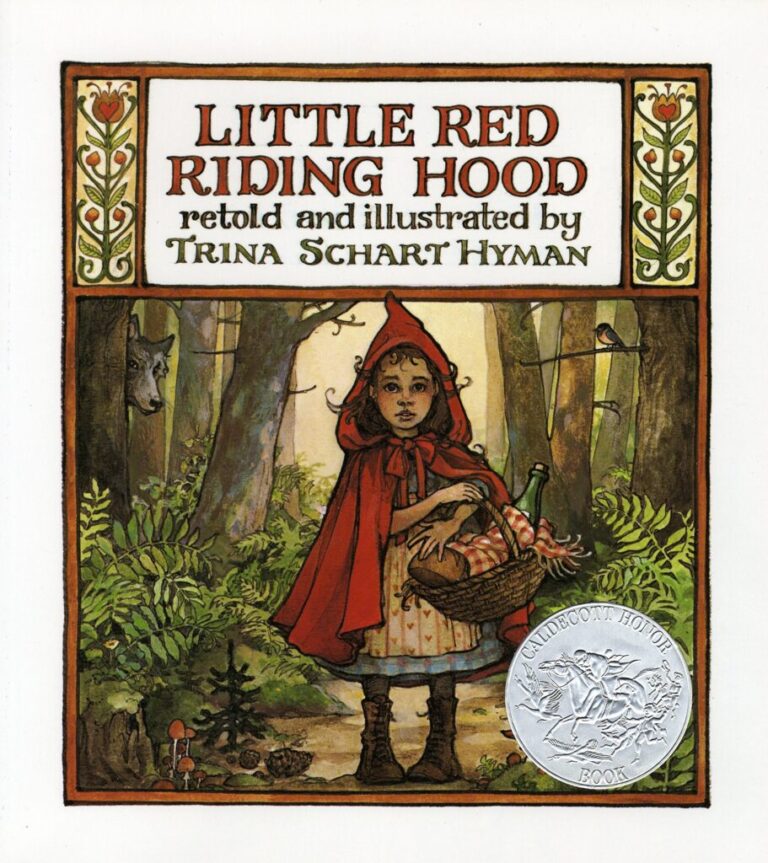
Little Red Riding Hood
Trina Schart Hyman
Holiday House
1983
This is how Hyman began to create the setting in her retelling of Little Red Riding Hood:
“‘Oh, it’s a good fifteen minutes farther into the wood. Her house is the one by those three big oak trees, right next to the blackberry hedge, and there’s a stream running by her garden.’” Hyman
Hyman’s illustrations relate much of what the reader needs to know about the setting, but she also gives the readers some verbal clues.

“‘Just look at those beautiful wildflowers, Red Riding Hood!…why don’t you relax and look at the world, and see how lovely it is? Why, I don’t believe you even hear the birds sing, or enjoy the sunshine!… Everything else is so gay and happy out here in the forest,’” Hyman – [The Wolf is talking to Little Red Riding Hood.]
Hyman, Trina Schart. Little Red Riding Hood. Holiday House, 1983.

Little Red Cap
Lisbeth Zwerger
The text and Illustrations were first published in German in 1987.
In the following passage, Zwerger paints a bit of the setting of her grandmother’s house:

“‘A good quarter of an hour into the forest, Her house is the one under three big oak trees. There are hazelnut bushes around it.’” Zwerger
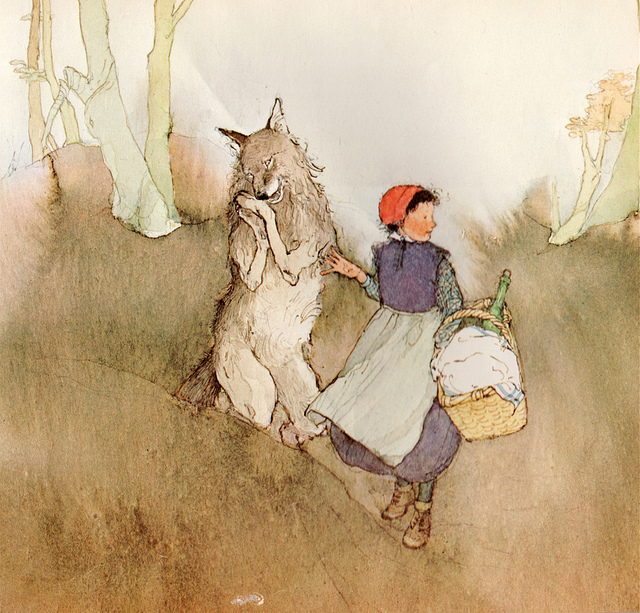
The wolf is talking to Little Red Cap:
“‘…just see all the pretty flowers….the birds are singing…it’s so much fun out in the forest.’” Zwerger
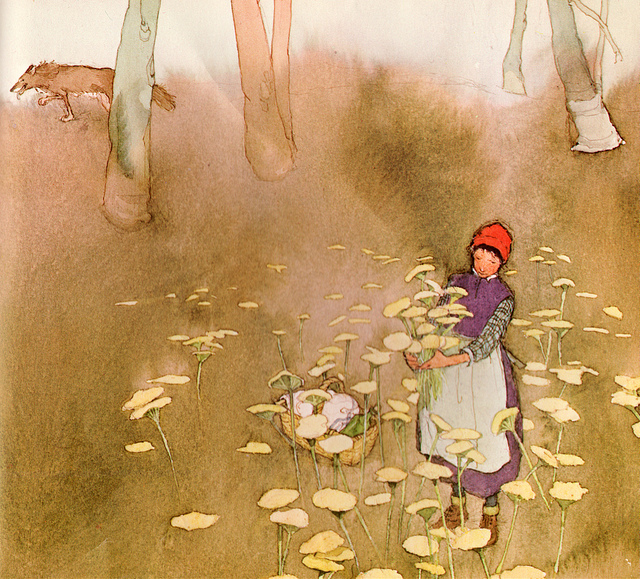
“…she saw how the sunbeams danced back and forth through the trees and the beautiful flowers that grew everywhere….” Zwerger

Now, let’s look at the setting in the old classic picture book The Little House.
Published in 1942, the illustrations are simple, but they help Burton create the setting for that book. The settings also show how the house’s story shifts, according to what was around it. Notice how, in the beginning of the book, the Little House has a happy, smiling face. In this fabulous picture book, the House is the Main Character:
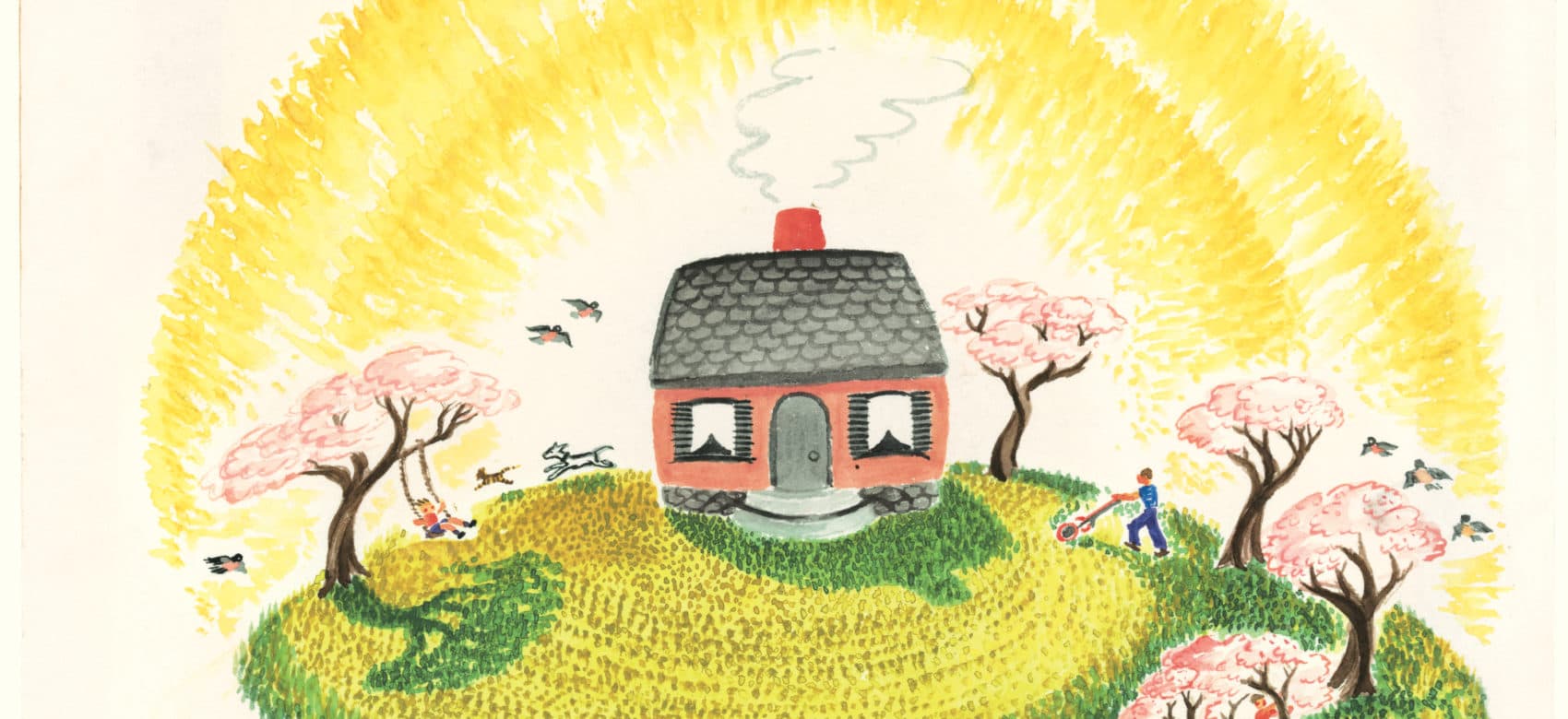
At the beginning of the picture book, the Little House sat peacefully somewhere out in a happy, rural place where the sun was shining and the trees were blossoming, and a child was swinging from one of the tree’s boughs. The illustrations tell us that.
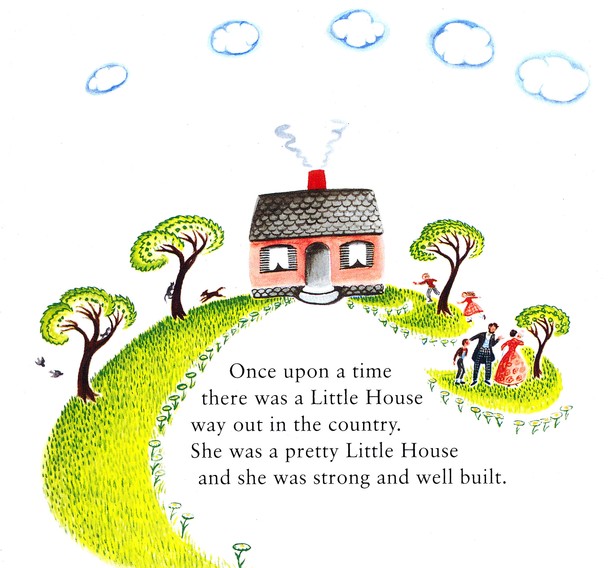
Text:
“Once upon a time, there was a Litle House way out in the country. She was a pretty Little House and she was strong and well built. The man who built her so well said, ‘This little house is built so well that she shall never be sold for gold or silver, and she will live to see our great great grandchildren’s great great grandchildren living in her.’
“The Little House was very happy, as she sat on a hill, and as she watched the countryside around her.
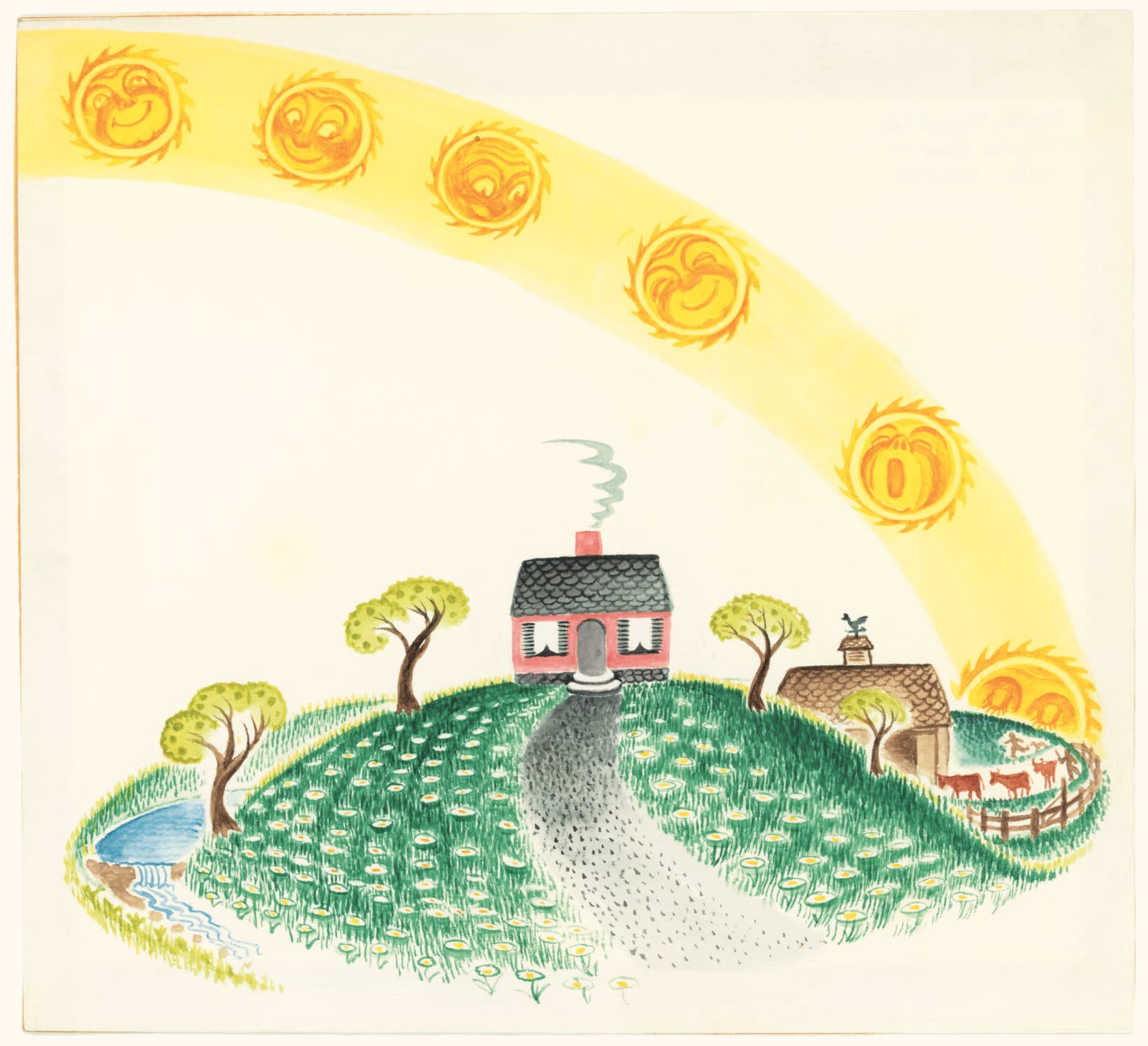
“She watched the sun rise in the morning and the sun set in the evening. Day followed day, each one a little different from the day before, but the Little House stayed just the same.”
And on and on the story goes. and ultimately, the Little House’s setting changed, and with it, its story also changed.
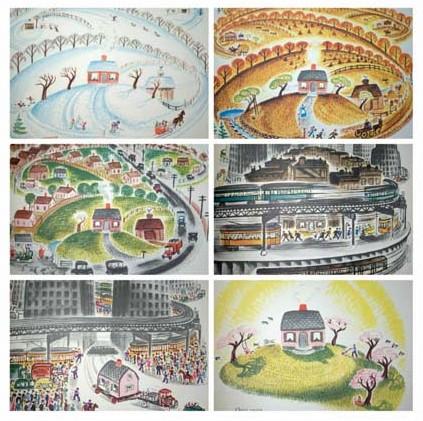
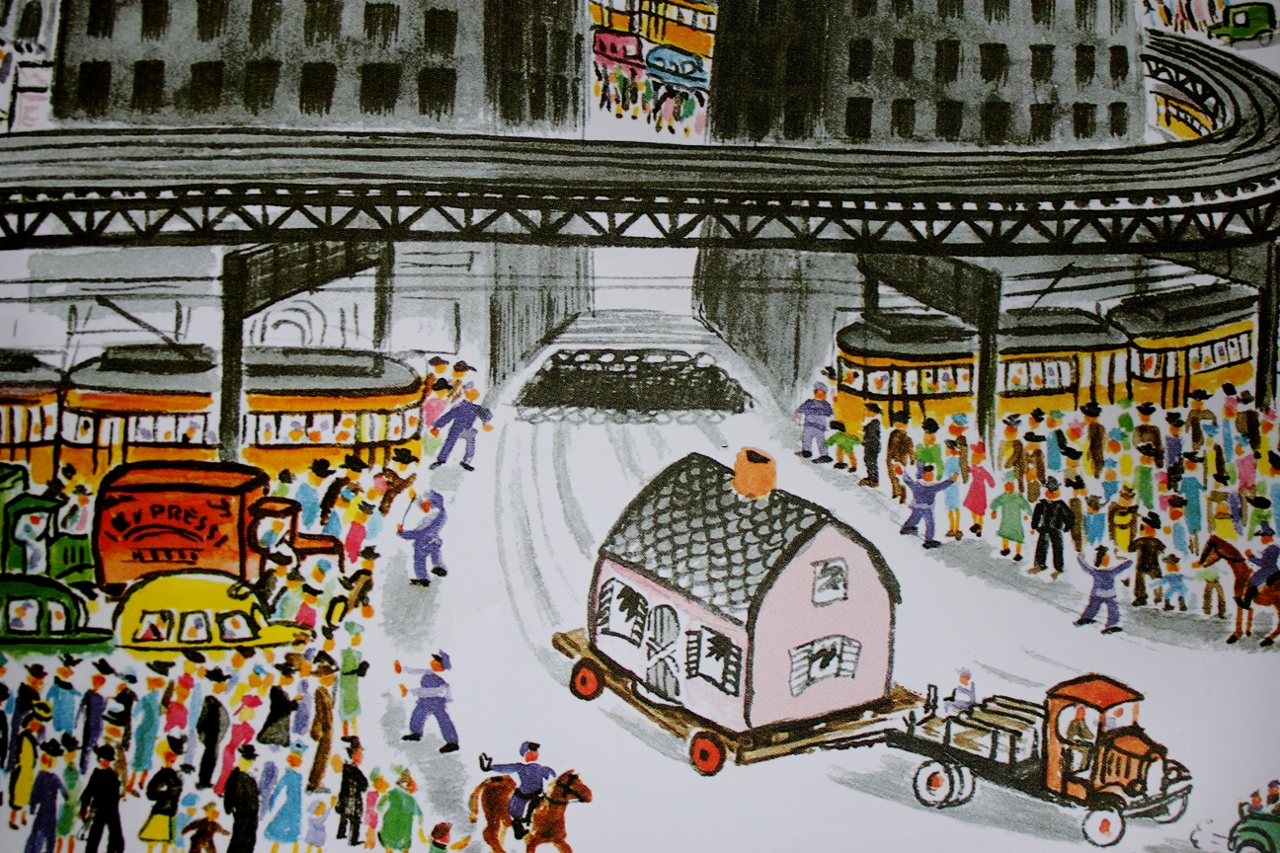 .I love picture books. With absolute precision, the best of them craft a story that is brilliantly short and yet, timeless.
.I love picture books. With absolute precision, the best of them craft a story that is brilliantly short and yet, timeless.
Novelists have more room to paint their settings. Let’s see how the brilliant Natalie Babbitt created the setting in her middle-grade novel: Tuck Everlasting.
Let’s also look at the setting of Rip Van Winkle:

Your assignment is to look at the first draft of the picture book that you are writing. Have you written any words that tell the reader WHERE your story is taking place?
Discover more from Jacki Kellum
Subscribe to get the latest posts sent to your email.